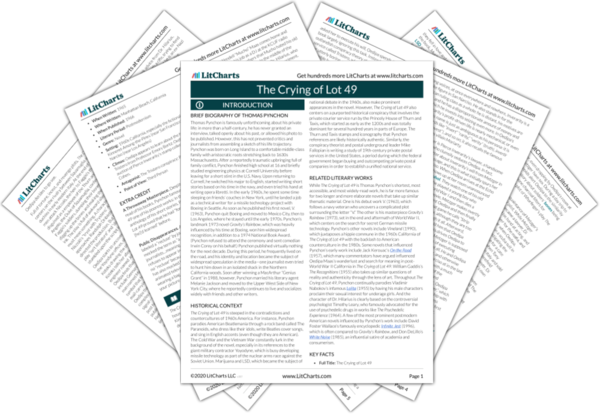Stanley seems to be part of the conspiracy that Oedipa is searching for but unable to learn anything about. In fact, her question “
Shall I project a world?” deals precisely with the question of how she can make sense of the conspiracy that she cannot prove. She recognizes that all she has is her own perception of the mystery—she cannot verify any of her clues beyond her own perception. This is how all interpretation works, including how people form a sense of reality and interpret literature. Indeed, Oedipa’s line about projection is a direct reference to her conversation with Randolph Driblette after
The Courier’s Tragedy, when Driblette said that he created the play like a projection that brings the universe to life in a planetarium. His interpretation of
The Courier’s Tragedy is just one version—similarly, Oedipa’s projection of the conspiracy is just one among many coherent perspectives on it. An audience can only ever come up with one among many valid interpretations of what a piece of literature or art
means.
